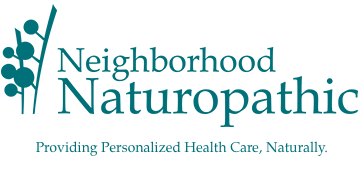The power of a gratitude practice has gotten more attention in the past few years but versions of it have been around for a very long time. As far back as Hippocrates in 450 BC, there has been an understanding that the mind, body and environment have an impact on health. This time of year, in the month where we celebrate Thanksgiving, it’s a great time to brush up skills for gratitude in your own life. The Greater Good Science Center at UC Berkley published research on the science behind and many benefits of gratitude. To read the details, see the white paperthey published. Did you know that gratitude practices improve your physical health, mental health, relationships, levels of inflammation, sleep, and energy levels?
Modern scientific research has shown that people who express gratitude experience a decrease in depression and anxiety, an increase in sleep quality, a reduction in blood pressure and risk of cardiac events, reduced fatigue, and improved relationships. Cultivating appreciation through gratitude has been shown to decrease stress hormone secretion by an average of 23%! Lower levels of stress hormones in the blood result in reduced stress, blood pressure and depression. Regular expression of gratitude can be particularly useful with the stressful holiday season fast approaching!
Here’s a list of possible gratitude practices – they come in all shapes and sizes, so find the one(s) that works best for you.
- Notice reasons to be grateful throughout the day. For example, notice beauty in nature, kindness from a stranger, your favorite song on the radio, or the things you enjoy about the people in your life. Don’t just think about the reasons, but really notice how the people, places, and things make you feel.
- Make a list of traits about yourself that you are grateful for and truly celebrate who you are as a person.
- Create a gratitude collage with all of the things you appreciate and put it up where you can see it or share it with others.
- Do something generous for others such as offering a smile to a stranger, a meal to someone in need, or other random acts of kindness. And then be grateful for what you have to give, no matter how big or small.
- By getting creative: Make your own “Gratitude Jar” by decorating any jar so it stands out and reminds you of gratitude. Place the jar in a place you know you will be twice per day, such as the side of your bed or next to your toothbrush. Anytime you are next to the jar and feel thankful, place a small amount of money in the jar. When the jar is full, donate its contents so that your gratitude can help others.
- Or, start a gratitude jar and each day put a note in it with 3 things you are grateful for. At the end of the month, read all of your collected reasons to be grateful and then empty the jar and start again. By the way, this is a really fun family activity!
- At the workplace: Disrupt a stressful moment with a smile. Not only are smiles contagious, holding a smile longer than 17 seconds has been shown to alter the brain’s chemistry and trigger feelings of happiness.
- On social media: Participate in “Tweetsgiving,” express your gratitude in a blog post, or recommend someone on LinkedIn. For more ideas on how to express gratitude on social media, visit http://communityorganizer20.com/2009/11/24/how-do-you-express-gratitude-on-social-media/
- On a daily basis: Hang a large calendar for the month of November in a common family living space. Every day, each member of the family should write down one thing that they are grateful for. One day during the week, sit down together to share and discuss everyone’s daily contribution to the calendar.
- At the dinner table: Have everyone share his or her “pit” of the day. Expand this exercise by having everyone share his or her “pit of the day and find its hidden blessing.
- By expressing thanks: Sit around the table and have each family member write a letter giving thanks to someone they never properly thanked, or someone who has made a profound impact on their life. Mail or hand-deliver the letter.
- By getting active: Set aside 20 minutes to walk through your neighborhood, around a park, or somewhere in nature as a family. As you walk, pay attention to your senses- everything you’re seeing, feeling, smelling, hearing, even tasting– see how many things you can find to feel grateful for.

References:
Mills, Paul J., et. Al (2015). The Role of Gratitude in Spiritual Well-being in Asymptomatic Heart Failure Patients. Spiritual Clinical Practice. Mar;2(1):5-17.
Algoe, SB, Fredrickson, BL, Gable SL (2013). The social function of the emotion of gratitude via expression. Emotion Aug:13(4):605-9.
Sin, NL, Lyubomirsky, S. (2009). Enhancing well-being and alleviating depressive symptoms with positive psychology interventions: a practice-friendly meta-analysis. Journal of Clinical Psychology. May:65(5):467-87.
McCraty, R., Barrios-Choplin, B., Rozman, D. , Atkinson, M. & Watkins, A. (1998). The impact of a new emotional self-management program on stress, emotions, heart rate variability, DHEA and cortisol. Integrative Physiological & Behavioral Science, 32, 151-70.
Allen, S. (2018).The science of gratitude. [White Paper]. Retrieved October 20, 2019 from UC Berkeley Greater Good Science Center: https://ggsc.berkeley.edu/images/uploads/GGSC-JTF_White_Paper-Gratitude-FINAL.pdf.
http://www.ncbi.nlm.nih.gov/pubmed/23731434
